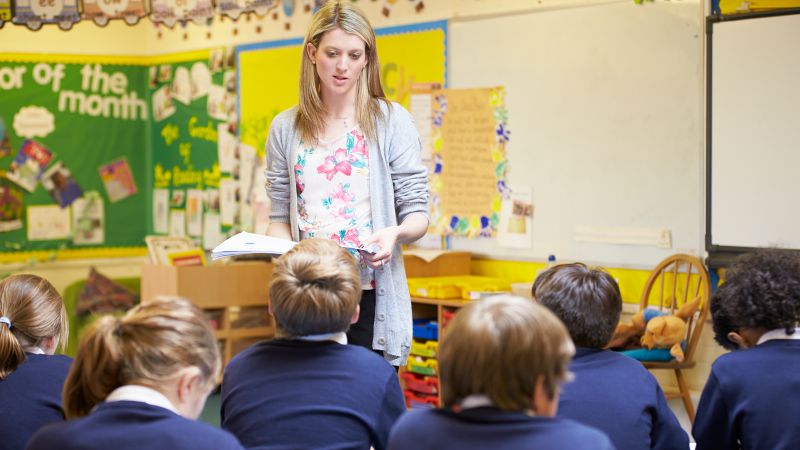
Remedial Instruction
A Guide for Classroom Teachers, Teacher Aides, and Students
Remedial instruction – used in an intervention program to targets basic skills such as phonics, reading, writing and number sense with the goal of raising the student’s ability to the standard expected of their age (to ‘remediate’ the problem before it becomes worse).

Remedial instruction is implemented when a teacher identifies that a student requires temporary, additional and specialist support for one or more core skills that cannot be provided by the teacher alone. Remedial instruction is the central strategy used in level 3 (the highest level) of Response to Intervention programs. Core skills refer to foundation skills such as reading, writing and arithmetic. More specifically, remedial instruction often targets phonetic awareness (identifying, processing, pronouncing, combining and using sounds and words). Other skills such as number sense (identifying and using numbers), handwriting and word recognition may also be targeted. As remedial instruction is used to address core skills, it is most often used with younger students.
The basic premise of remedial instruction is to help students to ‘catch-up’ to their peers and thus prevent ongoing academic issues.
The basic premise of remedial instruction is to help students to ‘catch-up’ to their peers and thus prevent ongoing academic issues. When students fall behind, a gap opens between their abilities and that of their peers. Over time, this gap gathers pace and widens to the point where learning in other areas is affected. Gaps in core skills affect all aspects of a student’s education as well as their self-confidence, motivation and interest in learning. Remedial instruction aims to arrest this spiral with targeted, small group or individual lessons delivered by specialist teachers. A typical remedial program involves the student attending daily sessions of 30-40 minutes with the specialist teacher. These sessions are held during class time, so it is not perceived as any type of punishment.
Hint: remedial instruction is not intended to be a “cure” for issues caused by a person’s disability or disorder. However, people with a disability or disorder can still attend a remedial program for the same reasons as their non-disabled peers.
Remedial instruction may sound great on paper, but there are some issues that need considering. Firstly, many remedial programs fail to produce an outcome that is any better than if the student stayed in class.i One reason for this might be that remedial classes sometimes repeat activities that have already failed the student in the past. Another common reason is a vague or incorrect diagnosis. When this happens, learning activities cannot target the specific issue. A common example of this is the false belief that a student has a problem with reading. In actual fact, the problem could be a mild and undiagnosed processing disorder, an eyesight issue, trouble with several sounds, or a lack of practise with whole-word recognition. No matter how many reading sessions the student attends, if the learning activities are not correctly targeted, the underlying issue will not be resolved.
No matter how many reading sessions the student attends, if the learning activities are not correctly targeted, the underlying issue will not be resolved.
Second, remedial instruction is not a substitute for poor or lazy teaching. Inexperienced teachers may need to seek further advice, training and support if a student has not progressed throughout the year but seemed to have no issues the year before. Third, remedial instruction can lead to negative labels and potential bullying: for example, ‘you’re in the dumb class’. Finally, remedial classes are expensive, time consuming, and they may require specialist staff who have specialist training (particularly for diagnosis and planning). The student also needs to be sufficiently motivated to engage in the process. Having buy-in from parents is also beneficial as research has shown that parental support has a positive effect on student achievement.ii
There is no consensus on the best way to organise and structure a remedial program. Often students follow a program similar to their original class but with a specialist teacher one-on-one or in small groups. Some strategies (such as direct instruction and direct explicit instruction which follow tight structures and scripts) save the teacher time on planning and developing resources, as well as providing easy lessons for parents to implement. Some of the main components of remedial instruction are outlined below:
- An ‘education team’ being formed (parents, teachers, support staff, specialist staff and managers) to support each other and the student.
- A specialist teacher accurately diagnosing the issue and confirming it with the classroom teacher.
- A backwards-design process being used to plan and schedule the program. This includes determining SMART goals, micro-goals, rewards and ways of celebrating achievements to boost students’ self-confidence. Parental involvement, resources and methods of assessment are documented.
- Students attend small group sessions made up of 2-4 students of the same age (where possible). These students might come from various classes or schools.
- Sessions are casual, relaxed and pleasant experiences that use interesting materials. Teachers work hard to develop a positive rapport and to show students that they genuinely care about them.
- Sessions are scheduled for 20-40 minutes, 2-4 times a week and held during normal class hours. Additional sessions can be run by parents in the evening.
- An effort is made to ensure that students do not feel like they are missing out on any activities such as sport or art.
- Lessons follow a relaxed/casual yet rigid, teacher-centred structure with activities designed to meet specific goals. For example, flash cards are used for students to read, process and pronounce high-frequency words.
- Progress is measured at regular intervals such as with oral tests. Best practice is to record and graph student progress each week. This allows teachers, students and parents to see the trajectory of improvement. A weekly 3-minute reading assessment can be used to collect data on student reading scores (such as total errors from a passage in a set period of time). The score from each week can then be graphed to show the student’s gradual improvement.
- Parents are recruited to support the program by undertaking activities with their child at home (such as casual reading and writing to learn). This provides students with more learning time, increased repetition (which leads to automaticity), additional contexts and model examples for reinforcement. They also are exposed to the benefits of spaced practice and consolidation.iii
Hint: there is no shortage of commercial programs available for schools to purchase – all with fancy names (many of them rhyming for added effect). Many promise remarkable results due to the latest ‘research’, ‘science’ or some unique approach. Unfortunately, there is no ‘neuro-something’ magic remedy or long-lost ancient solution that science is only now rediscovering. In fact, developing your own remedial program is easy provided the diagnosis is correct, the end goals are SMART and there are plenty of opportunities for practice combined with explicit instruction. Other strategies found in this book may also be useful, such as repeated reading.
Foot notes:
- Intervention programs are often criticised for being no more effective than if the child was provided with one-to-one instruction (which is more effective than whole class learning as a general rule of thumb). Some have been criticised for being no more than pseudo-science, even though they have had wide adoption.
- Wilder, S. (2014). Effects of parental involvement on academic achievement: a meta-synthesis. Educational Review, 66(3), 377-397.
- Hattie, J. (2009). Visible Learning. New York: Routledge, Taylor & Francis Group.






















